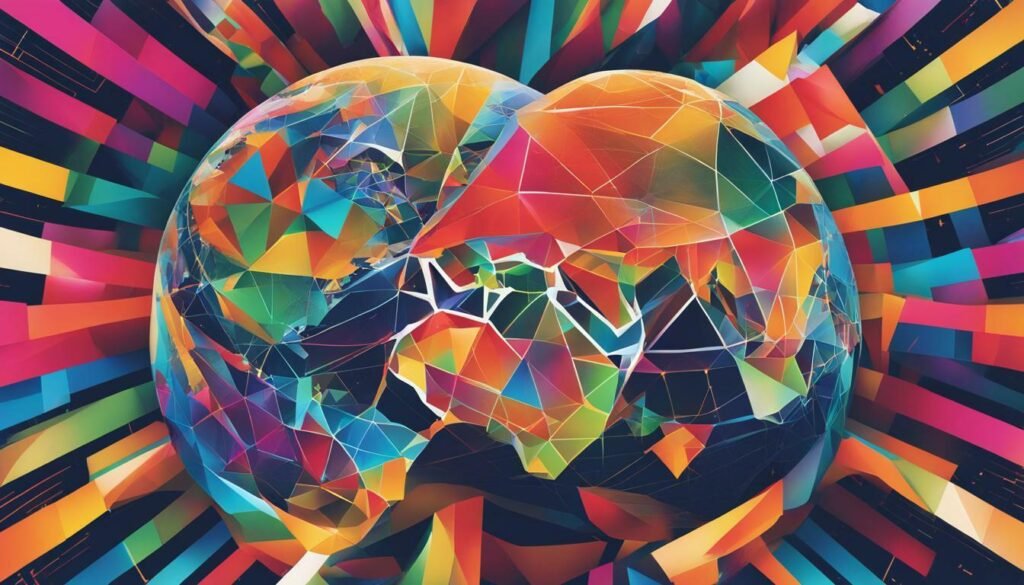Language barriers are no longer a hindrance thanks to our revolutionary Translation AI, leveraging cutting-edge technology to simplify language communication. Our advanced AI translator tools harness the power of artificial intelligence, enabling seamless conversion between languages in both text-to-speech and speech-to-text scenarios. Whether you’re a student looking to access diverse sources of information or a language learner seeking immersive experiences, our friendly translation AI has numerous practical applications in education and beyond.
Study abroad programs become more enriching as AI translators allow students to overcome language barriers and fully immerse themselves in new cultures. Research papers can be seamlessly translated, enabling collaboration and knowledge sharing across international boundaries. Language learning courses can be enhanced with AI translation tools, providing students with real-time assistance and instant feedback. Virtual exchange programs and multimedia content exploration become more accessible and engaging with the power of AI translation at your fingertips.
While the advantages of AI translation are vast, it is important to acknowledge the limitations as well. Cultural nuances can be challenging to interpret accurately, and complex language structures may pose difficulties for automated translation systems. Occasionally, errors may occur in translations, requiring human intervention for accuracy. However, the ongoing advancements in translation technology have paved the way for more sophisticated tools and approaches.
Key Takeaways:
- Our Translation AI revolutionizes language communication by leveraging cutting-edge technology.
- AI translators have practical applications in study abroad programs, research papers, language learning courses, virtual exchange programs, and multimedia content exploration.
- Advantages of AI translation include time and cost efficiency, accessibility, and ongoing support for language learners.
- Limitations of AI translation include difficulties with cultural nuances, complex language structures, and occasional errors in translations.
- Ongoing advancements in translation technology, such as statistical and neural machine translation, continue to improve overall translation accuracy and quality.
The future of language translation is promising, with companies like OpenAI and Google competing to dominate the AI landscape. Real-time voice-to-voice AI translation tools, such as Google Translate, Microsoft Translator, iTranslate Voice, SayHi Translate, and Papago, enable seamless communication during conversations. For conferences and large events, specialized AI translation platforms like Stenomatic, KUDO, and Linguali offer features such as real-time interpretation, integration with presentation tools, participant engagement options, and customizable pricing.
Thanks to AI translation, global communication has been transformed, making language barriers a thing of the past. With our friendly Translation AI, you can effortlessly connect and communicate with people from all around the world, breaking down linguistic barriers and fostering a more inclusive and connected global community.
The Impact of AI Translators in Education and Beyond
The impact of AI translators extends beyond language barriers, empowering education and beyond with their practical applications in study abroad programs, research papers, and language learning courses. Thanks to advancements in machine translation technology, students can now access diverse sources of information and foster a multicultural learning experience.
AI translators play a crucial role in study abroad programs, enabling students to overcome language obstacles and immerse themselves in foreign cultures. With automated translation capabilities, students can interact with locals, navigate unfamiliar environments, and fully engage in their academic and social experiences. This not only enhances their language proficiency but also broadens their understanding of different cultures and perspectives.
In research papers and academic endeavors, AI translators facilitate communication across languages and enable collaboration between international scholars. By automatically translating scientific literature and scholarly articles, researchers can access a vast pool of knowledge from different countries, contributing to the advancement of their fields. Additionally, AI translators aid in the dissemination of research findings to a global audience, promoting cross-cultural understanding and facilitating international collaborations.
| Benefits of AI Translators in Education and Beyond |
|---|
| Enhanced language learning experience through immersion and interaction |
| Access to diverse sources of information and knowledge |
| Efficient collaboration and communication between international scholars |
| Broadening cultural understanding and fostering global connections |
The impact of AI translators in education and beyond is undeniable. As machine translation technology continues to evolve, it is opening up endless possibilities for global communication, breaking down language barriers, and transforming the way we learn, research, and interact with one another.

While AI translation offers advantages such as time efficiency and accessibility, it also comes with limitations like challenges in interpreting cultural nuances and occasional errors in translations. These limitations arise from the complexities of human language, where subtle nuances, idiomatic expressions, and context-specific meanings can be difficult for AI translation tools to accurately capture and convey. Despite advancements in natural language processing and machine learning algorithms, there are still instances where the AI translator may misinterpret or misrepresent the intended meaning.
Furthermore, AI translation software heavily relies on statistical and neural machine translation models, which are trained on large datasets. The accuracy and quality of translations are dependent on the availability and quality of the training data. Translating less common languages or specialized technical jargon may pose challenges for AI translators due to limited data availability in these domains.
Although AI translation tools have made remarkable progress in understanding and translating languages, they still cannot entirely replace human translators. Human translators possess the innate ability to comprehend complex cultural nuances and adapt translations creatively to capture the essence of the original text. They have a better understanding of the cultural context and can accurately translate idiomatic expressions and cultural references. Additionally, human translators undergo extensive training and possess domain-specific expertise, making them better equipped to handle specialized translation requirements.
Advantages and Limitations of AI Translation
| Advantages | Limitations |
|---|---|
|
|

In summary, AI translation tools have revolutionized language translation by offering time efficiency and accessibility. They have found practical applications in various domains, including education, where they aid in overcoming language barriers and providing a multicultural learning experience. However, AI translation still has limitations in accurately capturing cultural nuances and occasional errors in translations. It is crucial to consider the advantages and disadvantages of AI translation tools in different scenarios to determine the most suitable approach for each translation need.
Evolution of Translation Technology
The evolution of translation technology has paved the way for advancements such as statistical and neural machine translation, along with sophisticated computer-assisted translation and translation management systems. These innovations have revolutionized the field of language translation, making it more accurate, efficient, and accessible than ever before.
Statistical machine translation (SMT) utilizes statistical models to generate translations based on patterns and probabilities derived from large multilingual datasets. This approach has significantly improved translation quality by considering context and language patterns, resulting in more natural-sounding translations.
On the other hand, neural machine translation (NMT) employs deep learning algorithms to produce translations. NMT models are trained on massive amounts of bilingual data, enabling them to understand and generate translations with remarkable fluency and accuracy. This technology has brought translation quality to new heights, reducing the frequency of errors and enabling smoother communication across languages.

“Statistical machine translation and neural machine translation have significantly improved the accuracy and fluency of translations, eliminating many of the language barriers encountered in the past.”
In addition to advancements in machine translation, computer-assisted translation (CAT) and translation management systems (TMS) have streamlined the translation process for professionals. CAT tools provide translators with features like translation memory, terminology databases, and quality assurance checks, enhancing their productivity and consistency. TMS platforms, on the other hand, offer end-to-end translation management solutions, enabling efficient project management, collaboration, and seamless integration with other systems.
The combination of statistical and neural machine translation, along with sophisticated CAT and TMS tools, has transformed the translation industry, empowering language professionals and facilitating global communication like never before.
Advancements in Translation Technology
| Technology | Description |
|---|---|
| Statistical Machine Translation | Uses statistical models and patterns to generate translations based on large multilingual datasets. |
| Neural Machine Translation | Employs deep learning algorithms to produce fluent and accurate translations by understanding context and language patterns. |
| Computer-Assisted Translation | Provides translators with productivity-enhancing features such as translation memory and terminology databases. |
| Translation Management Systems | Offers end-to-end translation management solutions, streamlining project management and collaboration. |
Choosing the Right Translation Approach
Choosing the right translation approach depends on factors like linguistic accuracy, creative adaptation, speed, and cost-efficiency, which must be carefully considered when weighing machine translation against human translation. Machine translation, powered by advanced AI algorithms, is often favored for its speed and cost-effectiveness. It can quickly process large volumes of text and provide instant translations, making it ideal for tasks that require a quick turnaround.
However, machine translation may fall short in terms of linguistic accuracy and creative adaptation. It relies on predefined rules and algorithms, which can sometimes result in translations that do not fully capture the nuances of the source language or culture. This can be a significant drawback when translating complex texts, literary works, or creative content that demands a high level of linguistic precision and cultural understanding.
On the other hand, human translation offers the advantage of linguistic accuracy and creative adaptation. Skilled human translators possess a deep understanding of the source and target languages, allowing them to convey the intended meaning and tone with precision. They can adapt the translation to capture cultural nuances, idiomatic expressions, and contextual references, ensuring a more accurate and culturally sensitive final result.
While human translation may be more time-consuming and expensive compared to machine translation, the benefits it provides in terms of linguistic accuracy and creative adaptation are invaluable for certain types of content. For critical documents, marketing materials, legal texts, and creative works where precision and cultural sensitivity are paramount, human translation remains the preferred choice.
Comparing Machine Translation and Human Translation
| Machine Translation | Human Translation | |
|---|---|---|
| Advantages | Speed, cost-efficiency | Linguistic accuracy, creative adaptation |
| Disadvantages | Potential errors, limited cultural understanding | Time-consuming, higher cost |
Table: A comparison of machine translation and human translation
In summary, the choice between machine translation and human translation depends on the specific requirements of the task at hand. For quick and cost-effective translations where linguistic accuracy and creative adaptation are not critical, machine translation can be a viable option. However, for content that demands precision, cultural sensitivity, and a nuanced understanding of language, human translation remains the gold standard.

The future of language translation holds exciting possibilities with advancements in AI and machine learning, as companies like OpenAI and Google compete to push the boundaries of language translation technology. These industry leaders are investing heavily in research and development to improve the accuracy and efficiency of translation tools, aiming to provide seamless and natural language conversion.
One area of significant progress is voice-to-voice AI translation. Companies such as Google, Microsoft, and iTranslate Voice have developed innovative applications that allow real-time translation during conversations. These tools use advanced speech recognition and natural language processing to enable instant communication between individuals speaking different languages, bridging language barriers and facilitating global collaboration.

For larger events such as conferences and seminars, specialized AI translation platforms like Stenomatic, KUDO, and Linguali are emerging as powerful solutions to facilitate multilingual communication. These platforms offer real-time interpretation services, integrating seamlessly with presentation tools and enabling participants from diverse backgrounds to engage effectively. Customizable pricing options and participant engagement features make these platforms highly versatile and adaptable.
The Future of Multilingual Communication
“Advancements in AI and machine learning are transforming the way we communicate across languages. The potential for global collaboration and cultural exchange is immense, and we are only scratching the surface.”
As companies like OpenAI and Google continue to invest in language translation solutions, we can expect further breakthroughs in accuracy, speed, and adaptability. The future holds the promise of even more sophisticated AI translators that can understand complex nuances, idioms, and cultural references, providing seamless multilingual communication for individuals and businesses worldwide.
In Conclusion
The evolution of language translation technology has already revolutionized global communication, and the future looks even more promising. With advancements in AI and machine learning, companies like OpenAI and Google are shaping the landscape of language translation, making it easier for people from different cultures and languages to connect and collaborate. As these technologies continue to develop, the world will become more interconnected, bridging language barriers and fostering a truly global community.
Conclusion
In conclusion, AI translation has revolutionized global communication, making language barriers a thing of the past and enabling seamless interactions across languages. Through the use of cutting-edge AI translator tools that harness artificial intelligence, text to speech or vice versa conversion across languages has become effortless. These tools have had a significant impact on education, allowing students to access diverse sources of information and fostering a multicultural learning experience.
AI translators are increasingly being utilized in study abroad programs, research papers, language learning courses, virtual exchange programs, and multimedia content exploration. They offer numerous benefits, including time and cost efficiency, accessibility, and ongoing support for language learners. With the ability to provide fast, accurate translations, AI translation has become an invaluable asset in facilitating efficient global communication.
However, it is important to note that AI translation also has its limitations. Challenges may arise in interpreting cultural nuances, handling complex language structures, and occasional errors in translations. While AI translation has come a long way in bridging language gaps, human translators still play a crucial role in ensuring linguistic accuracy and creative adaptation, especially in sensitive and nuanced scenarios.
The evolution of translation technology has led to significant advancements such as statistical and neural machine translation. Additionally, computer-assisted translation and translation management systems have streamlined the translation process, increasing efficiency and improving overall quality.
Looking towards the future, AI and machine learning will continue to play a pivotal role in language translation. Companies like OpenAI and Google are competing to dominate the AI landscape, driving innovation and pushing the boundaries of what AI translation can achieve. Voice-to-voice AI translation tools, including popular options like Google Translate, Microsoft Translator, iTranslate Voice, SayHi Translate, and Papago, enable real-time translation during conversations, further enhancing global communication.
For conferences and large events, specialized AI translation platforms like Stenomatic, KUDO, and Linguali offer tailored features to facilitate multilingual communication. These platforms provide real-time interpretation services, seamless integration with presentation tools, participant engagement features, and customizable pricing options. With such advancements, language barriers are rapidly being eradicated, paving the way for a more interconnected world.
Overall, AI translation has truly transformed global communication, breaking down the barriers of language and facilitating meaningful interactions between individuals from different linguistic backgrounds. By embracing the power of AI and leveraging the latest translation technologies, we can collectively build a future where language is no longer a hindrance, but a bridge that connects us all.
FAQ
What is friendly translation AI?
Friendly translation AI refers to the use of advanced AI translator tools that harness artificial intelligence to convert text to speech or vice versa across different languages.
How does AI translation impact education?
AI translation has a significant impact on education by allowing students to access diverse sources of information and fostering a multicultural learning experience. It can be used in study abroad programs, research papers, language learning courses, virtual exchange programs, and multimedia content exploration.
What are the benefits of AI translation?
AI translation offers benefits such as time and cost efficiency, accessibility, and ongoing support for language learners.
What are the limitations of AI translation?
AI translation may have difficulties in interpreting cultural nuances, handling complex language structures, and occasional errors in translations.
How has translation technology evolved?
Translation technology has evolved with advancements such as statistical and neural machine translation, as well as the development of computer-assisted translation and translation management systems.
How do I choose the right translation approach?
Choosing the right translation approach involves considering the advantages and disadvantages of machine translation and human translation. Machine translation provides speed and cost-efficiency, while human translation allows for linguistic accuracy and creative adaptation.
What does the future of language translation look like?
The future of language translation includes advancements in AI and machine learning. Companies like OpenAI and Google are competing to dominate the AI landscape. Voice-to-voice AI translation tools enable real-time translation during conversations, and specialized platforms facilitate multilingual communication in conferences and large events.